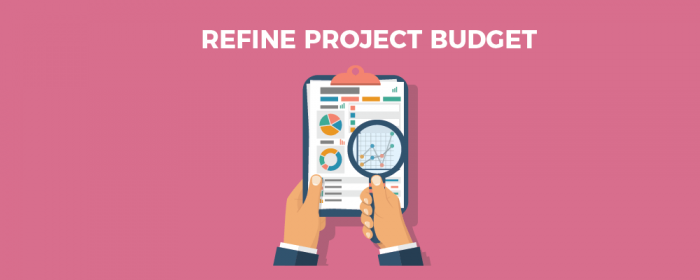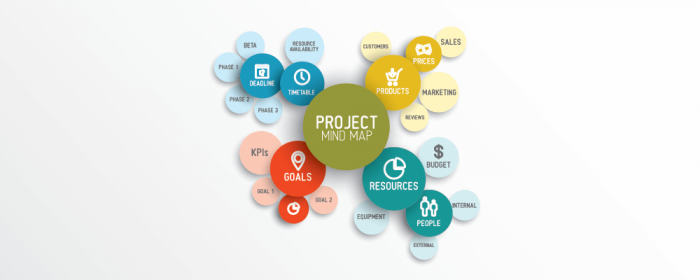From the moment the Agile Manifesto came into existence, the organizational paradigm has been busy mastering its principles and strategies. They became the norm if you wanted to be successful in the field of project management.
And this fame is totally justified. According to research, agile practices are the best in the business, if you want a successful project that reaches the market in less time than whatever your competitors come up with. It is the last word when it comes to project management strategies.
In this article, we will let you know all about Agile Project Budgets and what are the strategies and processes that you can use to calculate accurate project budgets.
The Processes that You Use to Calculate Project Budgets must be Flexible

Whenever a new project is brainstormed in the organizational paradigm, it’s usually done so because the company has come up with some ground-breaking idea that they want to bring forward and share with the whole world, or they have fallen into a certain problem and they want their teams to find them a solution quickly.
However, a potential stakeholder taking part in that project depends on the proposal that shows that this project will be a good investment for their portfolio.
Moreover, in the organizational paradigm, there are always costs and budget overruns that cost the stakeholders more than a pretty penny. That’s why they always require an accurate cost and implementation budget of the whole shebang to keep track of everything.
Why do they want to keep track of everything from the start? Well, mostly in the software industry, there’s always a strong chance that the goals and milestones that you set out during the early phase of the project might not be the ones you end up with at the end of the process.
These changes along the way can badly disrupt your whole strategy when it comes to budgeting. These changes can originate from several different sources, both internal and external.
For example, you start a project and when you do, a competitor comes out with a better product to market. In this situation, you have to change your project to overcome your competitor and these changing requirements will affect your initial budget.
Also, if you set out with one set of goals and milestones in mind regarding your project, but your development team thinks that the IT solution to the problem is too complex and requires a redesign to make sure that the non-technical people on the team can understand it too.
Both of these situations are going to cost money which would not make the stakeholders involved in the project, any happier. To get rid of potential risks like these, it’s important that your team:
- Culminates an accurate budget for the whole endeavor, keeping in mind all of the different requirements set by the stakeholders and all of the goals and milestones set to be achieved by the development team
- Sets different processes in place, to make sure that if there are any changes to be done in the project, later on, there is enough flexibility in the budget to accommodate them, without the project going over budget
To make sure that your project and the team developing it, don’t go overboard, there are a few tried and tested strategies that will make your project budgeting more accurate.
4 Strategies to Make Your Project Budget More Accurate
There are four strategies that we will talk about in this article. They will assist your teams to be more flexible and Agile, accommodating every little change along the way, and give you a refined product at the end of the whole process.
1. Make Sure that All Key Elements are Located in the Shared Project Scope

To make sure that your team creates a realistic project budget, they need to nail down all of the requirements and expectations that all of the stakeholders connected to the project have associated with this project, to avoid any project scope-creeps in the future.
To do this, what many renowned companies do is that, they create a mind map that includes every little detail associated with the project, which they can share with all of their clients and get their feedback.
This will help them figure out what they need to change and what will it cost, at a very early stage of the project.
The founder of the famous company IT Enterprise, Thomas De Vos states that:
“Having client requirements displayed visually immediately demonstrates the complexity of the project to both us and the client,”. “Linking different sections of the mind map allows the team to visualize interactions between different project areas, while defining the client’s user story and how we will go about achieving it.”
According to reports, when this approach was not so widespread in the market, many of the needs and the requirements of the clients would be missed just because their needs were not properly heard during the brainstorming phase or in the early stages of the project development process.
This resulted in many different changes to make in the original manifesto of the project, leading to some drastic cost recalculations and some awkward conversations between you and the client, further down the line.
By using this technique and sharing a visual representation of everything connected to the project, spread out before the eyes of the client, your team will take the client and the stakeholders in confidence that their demands have been heard and associated with the project.
This will calculate all of the costs of the tasks associated with the project and will reassure everyone associated with the project that you are not going to ask for more money down the line just because you missed some conversation points at the start of the project.
After all of this takes place, you can then go and provide an accurate project budget to the team and the stakeholders, ensuring that all of the changes mentioned by them will be completed at the price.
2. Make Sure that There is a Process in Place to Refine the Budget

Once the previous step is all well and one, you can start to track all of the activities related to the project development process and how will it cost to perform them.
A company famous in the software market called Praxent has an amazing process that lets them establish a very realistic budget that starts by covering the most important elements when it comes to building software. These are product requirements, UX design, and product definition.
Let’s see all of them in a little more detail.
- Defining the Project: In this stage, no actual cost is provided to the stakeholders. But every goal, milestone, and process associated with the project is clearly defined here.
- Detailed Requirements Phase: At this stage, the team members associated with the project estimate the cost of all of the processes included in the product development process.
- UX Design: In this stage of the project, the company creates a working prototype of the software well within the defined budget and shows that to the client to assure them that their money is not going to run out before the development finishes.
Finally, after rigorous testing done on the prototype, the team can officially finalize a clear budget for the whole shebang.
All of these stages, enable the team to create some key criteria to once and for all finalize the project budget.
But these phases also set up a collaborative approach between the team and the stakeholders in which the latter is in the driving seat when it comes to feature and objective prioritization in the development process.
3. Make Sure to Use a Collaborative Solution as a Means to Manage all of the Feature Prioritization

One of the key concepts that the Agile methodology is based on states that “changing environments are embraced at every stage of the process to provide the customer with a competitive advantage.”
This means that the ability to change the whole project according to the changing business requirements and client’s needs is what makes this methodology one of a kind in the organizational paradigm.
However, if you want to make sure that the project is evolving at every stage and there is ample feedback being gathered by the stakeholder at every possible iteration of the project development process, you must build a collaborative workflow with all of the people associated with the project for feature prioritization.
That’s because, when you show all of the progress being made in the project development process to the stakeholders and give them the ability to take out and put in features in the development itinerary, you’re ensuring that they would love the product that you will build for them without going over the budget.
When you enable your clients to track every facet of progress that you make in the product development process while keeping in control different elements like budget and feature management, you are ensuring that the opinions of the stakeholders are integrated into the development process at every stage, while also ensuring that the project at hand will not get out of control.
4. Make Sure that You Use this Budget as a Way to Create a Refined Product for Your Clients

When you complete all of the steps mentioned above, you are ensuring that the stakeholder will not go overboard when listing all of the things that they need to see in the product and that only happened because you included them in the project and they knew what cost what.
This helps both of you to collaborate and develop a more refined product that is also cost-effective.
According to Jói Sigurdsson who is the founder of the company CrankWheel, “We discovered that many of our intended features were actually unwanted by our prospects. We’d hear the phrase ‘we could turn off that feature’ a lot, so we did, and ended building a much simpler, more targeted product than we would have otherwise.”
Once you have received concrete feedback from all of the stakeholders and the relevant people associated with the project, on all of the features connected to the project, you can use a Kanban board to assist you in feature management.
If you are not using a project management software that can take care of all your PM needs like creating Kanban boards for you, try nTask. It is the best in the business.
When you have all of the tasks mentioned in a sprint roadmap, and share that map with the clients and other stakeholders, you can define a proper limit on the number of feature tasks that your team can perform per sprint.
This will make sure that the project is not overcrowded with lots and lots of tasks, and also makes sure that your team is not overwhelmed when they find out that they have to perform an absurd number of tasks in a short period.
When all of these things happen, you make sure that you and your clients have joined their hands together to make the most refined and targeted application in the market.

